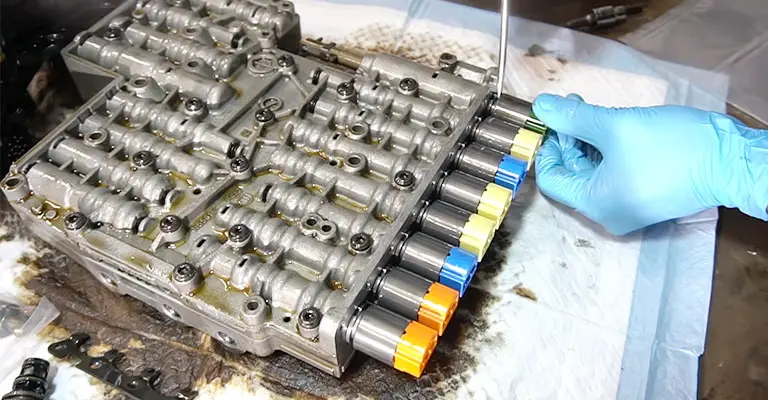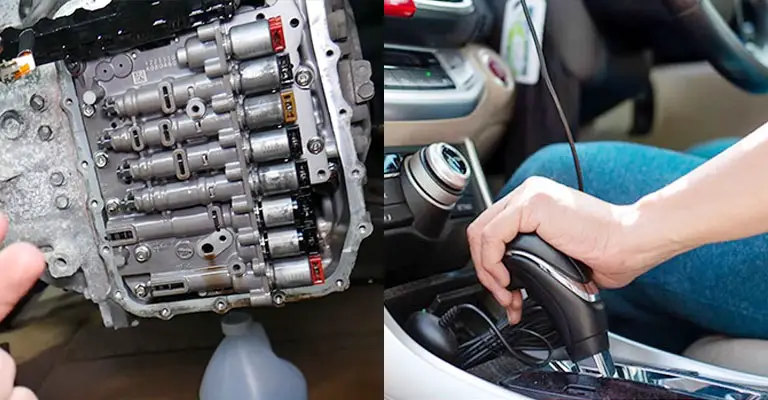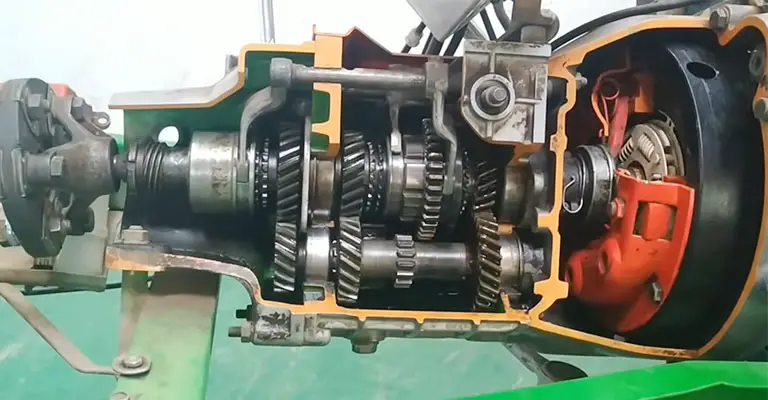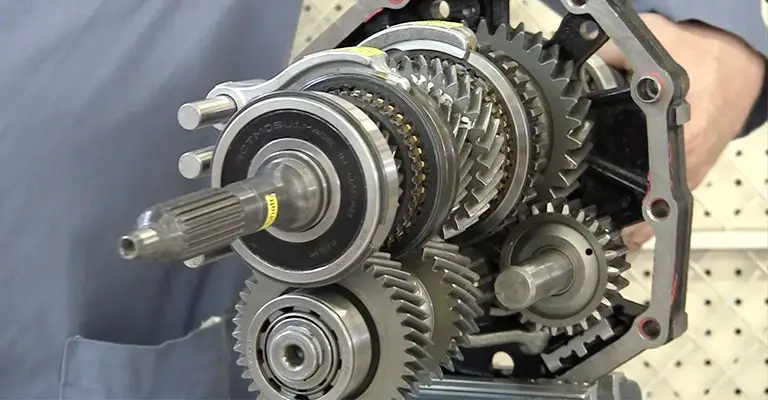A few parts of the vehicle act like the heart and brain. They are essential for core operations. One of them is the transmission, otherwise known as the gearbox.
Now, when it comes to transmission systems, the 4R100 is one of the most common trans. Most Ford pickup trucks have it. And just like any other transmission system, it can show a couple of problems over time.
However, the good news is that you can quickly fix most of them. Finding that hard to believe? This guide on 4R100 shift solenoid symptoms – everything you need to know is here to make you prove that! So, if you plan to own a Ford with the 4R100 or already have one, this guide is a must-read!
The Common Symptoms of a Failing 4R100 Shift Solenoid and Their Fixes

So, you will face difficulties driving when the 4R100 Shift Solenoid has some issues or is failing. However, that is not all! Some of the common symptoms can also let you know whether there are problems with the transmission or not. Also, some can tell you whether the transmission requires a complete replacement or not.
Want to know what symptoms we are actually referring to here? Let us give you a better idea regarding them!
Slipping Shifts and Hard or Delayed Shifts

When the 4R100 has severe issues, you will notice delayed, hard, or slipping shifts. These will be due to an internal fluid leak. That leak is allowing the outside air to get into your transmission. Sometimes, a bad pressure regulator valve can also be the root cause of this issue.
Alongside that, it could be too much resistance in the shift solenoid circuit. That indicates that there is a possible short. It can be due to the wiring connection not being proper as well.
Solution
Check whether the overdrive light is flashing or not. If so, there might be a short on one of the fuses. Replace it and.
However, if the problem is not with the fuse, there are problems with the wiring. Check for shorts and see if any of the connections are not proper or not.
Transmission Shifting in and out

One pretty common problem with the 4R100 is that the transmission can get in and out of gear while driving. That can eventually result in you being stuck in the middle of the highway.
Nonetheless, the overdrive light should flash on the dashboard when the transmission shifts in and out of gear. You should not drive the vehicle in auto mode when this light is flashing.
Furthermore, when this issue occurs, you might not be capable of shifting the transmission into reverse. It is yet another common giveaway of the fact that the transmission has shifted in and out of the gear.
Solution
When you find yourself stuck on the highway with this problem, you will need to drive the vehicle in manual mode. Also, after driving the vehicle safely, get the car checked by a professional mechanic. If the transmission condition is not severe, you might not need to replace it entirely.
Transmission Does Not Shift Properly

After using the vehicle with the 4R100 transmission for a prolonged time, you might notice that it is not shifting correctly. The problem becomes much more evident when you try to shift the transmission into reverse or make it operate in reverse.
So, what tells whether the transmission is working correctly or not? When you put it in reverse, the vehicle might not move at all. You will notice the engine RPM increasing, but the wheels will not move one bit.
Solution
Get your vehicle inspected as soon as possible after noticing the symptom. The technician will most likely discover that the calipers of the transmission are defective. And they will require a replacement. Some reports regarding this issue have also claimed that a malfunctioning IAC valve generally causes the problem.
Fluid Leak
When there is a transmission fluid leak, you are most likely to find a puddle on the spot where your vehicle is parked. In fact, there is no need to look under the car right after parking it. Check your garage! There will be dark spots right in the space where you park the vehicle at.
That said, sometimes, the fluid leak might not be that severe to form a puddle or dark spot in the parking area. So, how can you tell whether there is a transmission fluid leak? Well, you will hear clunking sounds when you start the vehicle. This indication can let you know that there is a leak in the transmission.
Solution
Before anything else, check the front seal. When you do not use the vehicle for a prolonged amount of time, the seal tends to dry up and become brittle. When it does dry up, it will lose all the elasticity, resulting in a leak. All you need to do is replace the seal.
After that, put your focus on the hub of the torque converter. When you are using the vehicle continuously, the hob does tend to form a leak. Again, you should check the seal that is on the torque converter. If it is not forming a proper sealing, replace it.
However, if the front seal and the seal of the torque converter hub seem good, there is a significant problem with the system. In such cases, you might need to replace the entire transmission. But before you look for a better deal on brand new transmission, venture into the used market. You will get a better deal!
Malfunctioning IAC Valve
Over time, the IAC valve of the transmission can show different problems. It can malfunction and make the vehicle not operate optimally. In such cases, the common symptom would be stalling. But why does the IAC malfunction?
Well, the IAC, which abbreviates to Idle Air Control, is a device present on most modern engines. Its main task is to control the idling RPM of the engine. And the manufacturers design it to operate optimally for the vehicle’s entire lifetime. But that does not make it less susceptible to premature failure.
Basically, premature failures occur for complete or partial jamming of the actuator. This jamming makes the IACs lose the ability to smoothly control the RPM. And when it can not correctly maintain the RPM, you will face stalling issues.
Solution
There is really no need to replace the entire IAC to fix this problem. Instead, get it out of the system and clean it properly. In most cases, a simple cleaning job will fix the issue. However, if that does not work, you might have to replace it.
Clutch Issues
When there are issues with the clutch, the transmission will tend to work one way or the other. For example, in the case of the 4R100, it can only work in the reverse mode. And that symptom is a clear giveaway that there is a problem with the cluck assembly.
In fact, if the issue is specifically with the forward gear mode, the forward planetary gear might have problems. These tend to have spline and planet failure over time.
Solution
For the issue regarding the spline and planet failure, you will require replacement parts. However, if there are severe damage to the other parts of the transmission, you will need to rebuild or re-manufacture the entire transmission. But if that is out of the equation for you, you should get a replacement for the system.
On that note, the re-manufactured 4R100 transmission is readily available in the market. But you should ensure that you get one from a reputed manufacturer. Otherwise, the one that you will get might break within a couple of months. Also, make sure that the warranty is legit.
Error Codes
You can come across a couple of error codes that will be due to the 4R100 transmission. For example, the P0420 states the ECM has detected problems with the 4R100. Likewise, there are other error codes associated with the 4R100.
Solution
In most cases, you can easily solve the error codes with the transmission. However, if the problem is too severe, you will need to replace the 4R100. Again, in this case, you can consider getting a re-manufactured transmission. That will lower the cost significantly.
Final Words
So, the main takeaway from this guide on 4R100 shift solenoid symptoms – Everything you need to know is that transmission can show loads of different problems over time. However, as you can see, not all of them will require you to replace the entire system. You can get away with minor replacement parts for many!
Leave a Reply